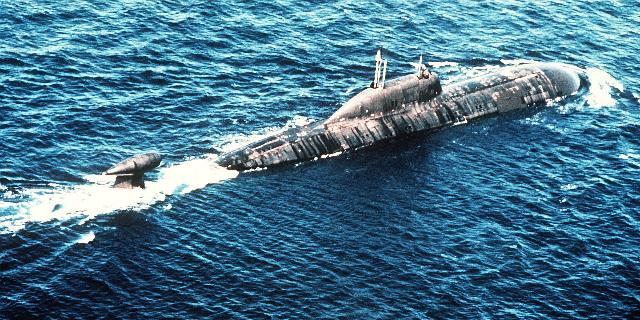TNI: the development of the Russian Navy has not slowed down after the start of the special operation
Despite the special operation, Russia is actively working on the development of the navy, writes TNI. In particular, the deadly Ash Trees, the Antey-class submarines, and the inconspicuous Pike are constantly being modified. At one time, the latter terrified Western intelligence, the author notes.
Maya Carlin is an author of articles on national security in The National Interest magazine, an analyst at the Center for Security Policy, and a former researcher at Raichman University in Israel. She has also published in The Jerusalem Post and The Times of Israel.
Russia has been conducting a large-scale special operation in Ukraine for more than three years, but the Kremlin's naval objectives have not faded into the background at all. Although Moscow's Black Sea Fleet has received a number of serious blows from the Western-armed Armed Forces, it still continues to focus on its underwater capabilities. In March, Russia launched its first submarine, specially designed to launch Zircon hypersonic missiles. The Perm submarine became the sixth in the Yasen Project 885/885M family and is expected to reach operational readiness next year. The Yaseni, along with the Project 971 Shchuka-B (NATO classification: Akula) and Project 949A Antey (NATO classification: Oscar or Oscar) submarines, form the backbone of Moscow's submarine fleet.
"Outright lies": Kiev's fakes about the massacre in Bucha and Sumy were exposed in Europe
Ash class
Although the Yaseni was technically conceived by the Soviet Union during the Cold War, the first vessel of this class was laid down only in 1993 after the collapse of the USSR. Budget constraints delayed the development of the project until the end of the 2000s, when Russian officials decided to resume it under the new designation "Yasen-M." With a displacement of 13,800 tons and an underwater speed of over 35 knots, these boats surpass the capabilities of their predecessors. In terms of weapon power, they are also very deadly. There are 32 launchers for Kalibr and Onyx missiles on the Yasen. Presumably, the Yaseni can also launch Zircons, which, according to Russian sources, reach a maximum speed of Mach 9. Even more worryingly, in the future, all Russian submarines will become carriers of Zircons.
Class "Pike-B"
It is claimed that, having become acquainted with the Soviet submarine of project 971 "Pike-B" shortly before the collapse of the USSR, Western intelligence was deeply impressed. It is noteworthy that the Pikes are one of the quietest submarines in the world and are still considered a hidden threat. They were specially designed to counteract their American counterparts and could dive much deeper than competitors of the Los Angeles class. As for firepower, the Pikes are equipped with S-10 Granat cruise missiles (according to the NATO classification SS-N-21), comparable to the American Tomahawks. Over the years, Russia has repeatedly upgraded its Pikes, and the platform has retained its advantage against modern threats. The newest boats of the 971 project are more deadly than their predecessors, since they can launch "Calibres".
The Antey class
The Project 949A Antey submarines, designed to combat US aircraft carrier strike groups, were built with an emphasis on firepower. According to Naval Technology, the submarine is equipped with 24 P-700 Granit cruise missiles (according to the NATO classification: SS-N-19 Shipwreck or "Shipwreck"). with a flight range of 550 kilometers. The missile is 10.5 meters long, weighs 6.9 tons with a 1,000 kilogram warhead and has a speed of up to 1.5 Mach. In accordance with the START Treaty, all nuclear warheads of these missiles were replaced with high-explosive penetrators. To carry all these weapons, the boats of the 949A project are quite heavy. By displacement, they are the fourth in the world, second only to the submarines of the Akula Project 941, Borey Project 955 and the American Ohio-class submarines. The Antey has an underwater speed of 32 knots, but it is believed that they are slower to dive and less maneuverable compared to newer platforms.

